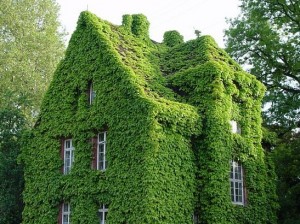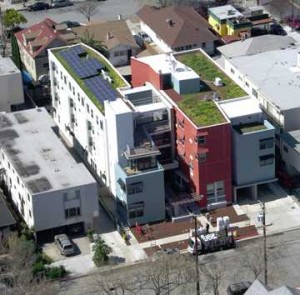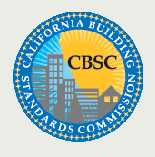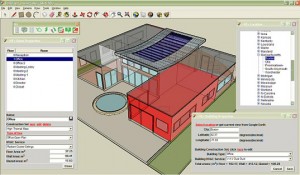Archive for category Green
86% of Building Construction Expenditures Relate to Renovation of Existing Buildings
Posted by Jim Foster in BIM, Built Environment, economic trends, Energy Analysis, Green, Sustainable Retrofits on February 18, 2013
 “As ASHRAE President Gordon V.R. Holness noted in the ASHRAE Journal, “Approximately 86% of building construction expenditures relate to renovation of existing buildings, not to new construction.” Holness estimated that “over the next 30 years about 150 billion sf of existing buildings (roughly half of the entire building stock in the United States) will need to be renovated.” Historically, new construction only adds about 2% annually to the U.S. commercial building stock, so the real opportunities for reducing operating costs must be found in building retrofit and renovation.” – Glumac Blog.
“As ASHRAE President Gordon V.R. Holness noted in the ASHRAE Journal, “Approximately 86% of building construction expenditures relate to renovation of existing buildings, not to new construction.” Holness estimated that “over the next 30 years about 150 billion sf of existing buildings (roughly half of the entire building stock in the United States) will need to be renovated.” Historically, new construction only adds about 2% annually to the U.S. commercial building stock, so the real opportunities for reducing operating costs must be found in building retrofit and renovation.” – Glumac Blog.
Buildings are the major source of global demand for energy and materials that produce by-product greenhouse gases (GHG). Slowing the growth rate of GHG emissions and then reversing it is the key to addressing climate change and keeping global average temperature below 2°C above pre-industrial levels.
To accomplish this, Architecture 2030 issued The 2030 Challenge asking the global architecture and building community to adopt the following targets:
- All new buildings, developments and major renovations shall be designed to meet a fossil fuel, GHG-emitting, energy consumption performance standard of 60% below the regional (or country) average/median for that building type.
- At a minimum, an equal amount of existing building area shall be renovated annually to meet a fossil fuel, GHG-emitting, energy consumption performance standard of 60% of the regional (or country) average for that building type.
- The fossil fuel reduction standard for all new buildings and major renovations shall be increased to:
- 70% in 2015
- 80% in 2020
- 90% in 2025
- Carbon-neutral in 2030 (using no fossil fuel GHG emitting energy to operate).
These targets may be accomplished by implementing innovative sustainable design strategies, generating on-site renewable power and/or purchasing (20% maximum) renewable energy.
Please visit Frequently Asked Questions section for more in-depth information on the 2030 Challenge.
******
*Note: This was stated in the January 2008 Edition of the ASHRAE Journal. When we polled permitting for Boston, we found 75% for construction in Existing Buildings. 25% New.
Flaring Off A Finite Resource : North Dakota Natural Gas best used to heat the outdoors.
Posted by Jim Foster in Green on September 27, 2011
 Listen, I am a capitalist and have recently become a big fan of the Carbon War Room which creates market based solutions for creating climate change, that is, let’s create something that reduces our reliance on fossil fuels and makes money all at the same time, in fact, let’s stop relying so much on the extraction of oil from the most politically unstable places on earth, that would be a good thing as well. So reading today’s NY Times “In North Dakota, Flames of Wasted Natural Gas Light the Prairie” I get a little worked up.
Listen, I am a capitalist and have recently become a big fan of the Carbon War Room which creates market based solutions for creating climate change, that is, let’s create something that reduces our reliance on fossil fuels and makes money all at the same time, in fact, let’s stop relying so much on the extraction of oil from the most politically unstable places on earth, that would be a good thing as well. So reading today’s NY Times “In North Dakota, Flames of Wasted Natural Gas Light the Prairie” I get a little worked up.
Every day, more than 100 million cubic feet of natural gas is flared this way — enough energy to heat half a million homes for a day.
Really, WTF. I’m sure the companies operating would love to capture the gas to sell but as mentioned in the article the infrastructure is not there to capture it, pipelines and processing. So let’ s look at the math
Natural Gas is running at the about $4.00 per 1,000 cubic feet at the wellhead, and they are running 100 million cubic feet a day so 100 Million/1,000 * $4.00 = $400,000. (multiplied by 365) = $146 Million Dollars per year.
WTF. And this is just from the commodity straight from the well head it does not count the economic impact of a new natural gas facility and the margins made by in between, etc. Okay I am sure an infrastructure project to capture all this is not cheap, but talk about a shovel ready project with a revenue stream able to pay off investors. But in a bid to extract as much oil as possible from the Bakken Field in North Dakota through hydraulic fracturing and horizontal drilling more and more and more gas will be released as a byproduct.
Why flare, because it’s easier and cheaper while extracting the more “valuable” oil from the fields. So while scientist try to figure out how extract energy from wood pulp and the sun, algae and the like myopia continues to claim more victims as we burn a precious, finite resource because it’s convenient. Let’s put even more people to work in North Dakota building the infrastructure in a planned and smart way. Wayne Schafer is quoted at the end of the article saying, “You can do it fast or you can do it right.” or I’ll quote one of the construction managers we’ve done work for, “You can do something no ass, or you can do something full ass, just don’t do it half ass”
Financing coming together for Green Building Initiatives : Consortium put together by The Carbon War Room
Posted by Jim Foster in Built Environment, Green on September 20, 2011
 So you want to retrofit a building. Everything is in place, the ROI calculations, the press for promoting your green building, possibly higher SF Lease Rates because of the Green Building, plus you’ll be saving money from it, less green house gases, less dependence on fossil fuel, etc. The one thing missing, no matter how much it makes sense, the financing. Excellent article in the NY Times, Tax Plan to Turn Old Buildings ‘Green’ Finds Favor, explaining the current model which would be in the form of bonds sold to investors. “The consortium was put together by the Carbon War Room, a nonprofit environmental group based in Washington set up by Richard Branson, the British entrepreneur”, what doesn’t this guy do.
So you want to retrofit a building. Everything is in place, the ROI calculations, the press for promoting your green building, possibly higher SF Lease Rates because of the Green Building, plus you’ll be saving money from it, less green house gases, less dependence on fossil fuel, etc. The one thing missing, no matter how much it makes sense, the financing. Excellent article in the NY Times, Tax Plan to Turn Old Buildings ‘Green’ Finds Favor, explaining the current model which would be in the form of bonds sold to investors. “The consortium was put together by the Carbon War Room, a nonprofit environmental group based in Washington set up by Richard Branson, the British entrepreneur”, what doesn’t this guy do.
As excerpted from the Article:
Short-term loans provided by Barclays Capital will be used to pay for the upgrades. Contractors will offer a warranty that the utility savings they have promised will actually materialize, and an insurance underwriter, Energi, of Peabody, Mass., will back up that warranty. Those insurance contracts, in turn, will be backed by Hannover Re, one of the world’s largest reinsurance companies.
As projects are completed, the upgrade loans, typically carrying interest rates of 7 percent, will be bundled into long-term bonds resembling those routinely issued by governmental taxing districts. Barclays will market the bonds. Retirement funds have expressed interest in buying these bonds, which will be repaid by tax surcharges on each property that undergoes a retrofit.
This all is just starting to make too much sense.
Green BIM : Everybody’s Doing It
Posted by Jim Foster in BIM, Green on October 25, 2010
 As reported recently in the Wall Street Journal, ‘Turning Consumers Green‘ the best tactic is peer pressure. From reducing plastic bag use to turning off the shower. You might ask, who’s going to pressure me in the shower. Fair enough, but this is in a locker room setting where they stated when a sign was posted to turn off the shower when soaping there was 6% compliance but if there was a plant, as in a person who they planted there to turn off water when they soaped, compliance rocketed to 47%. (Sidebar: How do they advertise this job and who applies or volunteers for that particular task.) But how does this impact you rather than reemphasizing people are sheep? Well if you can identity a trend that gains this kind of traction because of the peer pressure you don’t have to look far out into our industry before you find BIM and the emerging strength of Green BIM and rapid energy modeling. In a recent MCGraw Hill Smart Market Report, Green BIM the cited the growth of sustainable retrofits that are green will increase from 5-9% currently to 20-30% in 2014. Huge growth in energy simulation is expected in this market with the top 3 being:
As reported recently in the Wall Street Journal, ‘Turning Consumers Green‘ the best tactic is peer pressure. From reducing plastic bag use to turning off the shower. You might ask, who’s going to pressure me in the shower. Fair enough, but this is in a locker room setting where they stated when a sign was posted to turn off the shower when soaping there was 6% compliance but if there was a plant, as in a person who they planted there to turn off water when they soaped, compliance rocketed to 47%. (Sidebar: How do they advertise this job and who applies or volunteers for that particular task.) But how does this impact you rather than reemphasizing people are sheep? Well if you can identity a trend that gains this kind of traction because of the peer pressure you don’t have to look far out into our industry before you find BIM and the emerging strength of Green BIM and rapid energy modeling. In a recent MCGraw Hill Smart Market Report, Green BIM the cited the growth of sustainable retrofits that are green will increase from 5-9% currently to 20-30% in 2014. Huge growth in energy simulation is expected in this market with the top 3 being:
- Whole Building Energy Use
- Lighting and Day Lighting
- Energy Code Compliance
This type of analysis is right in BIM’s wheelhouse as seen in Revit CEA. However, one of the biggest issues still remains software integration, that is one model, many uses rather than everyone building their own model for their own uses. So look for more companies trying to either build functionality on top of existing platforms or creating translation or integration tools.
Look for Green to expand. It’s not for just Organic Folks eating Birkenstocks at their local markets as it is starting to make too much sense. For example, Casa Feliz Apartments in San Jose and as reported by Robbie Whelan in the Wall Street Journal, ‘utilized bamboo floors, linseed oil based linoleum and ergonomic chairs in the lobby made from sustainability farmed wood.’ Addtionally,
Casa Feliz is one of a growing number of affordable-housing projects nationwide that have been built “green”—that is, with nontoxic materials, highly energy-efficient appliances, and features such as green roofs and solar panels. Thanks to tax credits designed to attract private capital and aggressive cost-cutting on other construction features, affordable-housing developers are embracing eco-friendly building features that were once the purview of high-minded designers and wealthy developers with money to spare.
MetLife Inc., the big New York-based insurance company, is one of those investors. Matt Sheedy, who invests funds from MetLife’s $325 billion general account, says MetLife and other large institutional investors are eager to invest in green affordable-housing projects because they have a safer risk profile than more traditional housing projects.
So either get caught by the wave, or build your boat out of sustainable wood, hoist your hemp sail and get going. Your firm needs a Green BIM strategy.
Sustainable Retrofits Projected to be $400b US Market by 2030
Posted by Jim Foster in Built Environment, Green, New Technologies, Sustainable Retrofits on August 27, 2010
 I had a conversation yesterday with as Program Manager from Autodesk who was looking into implementing workflows utilizing Autodesk Products to produce energy analysis for existing buildings. He had seen one of our many fantastic videos for PKNail, okay we have two homegrown videos, but our effort in capturing the built environment dovetails nicely with this effort. And while I have commented many times on the sustainable retrofit market I had not seen a number placed on it but Autodesk posted a number on their web site. If you are not intending to make the jump you can read some of their conclusions below.
I had a conversation yesterday with as Program Manager from Autodesk who was looking into implementing workflows utilizing Autodesk Products to produce energy analysis for existing buildings. He had seen one of our many fantastic videos for PKNail, okay we have two homegrown videos, but our effort in capturing the built environment dovetails nicely with this effort. And while I have commented many times on the sustainable retrofit market I had not seen a number placed on it but Autodesk posted a number on their web site. If you are not intending to make the jump you can read some of their conclusions below.
Buildings are key to achieving climate stabilization, representing roughly 40% of global energy consumption and 25% of global carbon emissions. In addition, energy efficiency retrofits represent a massive latent market, projected to reach an estimated worth of $400 billion by 2030 in the U.S. alone. To respond to these twin environmental and market demands at scale and speed, the building industry needs to respond quickly and cost-effectively.
Our research suggests that rapid energy modeling enables building energy assessments with a smaller budget and shorter time frame, and can thereby help increase the number of existing buildings that undergo assessment and energy upgrades. We expect property owners and managers, home buyers, tenants and landlords, designers and architects, auditors, and energy consultants to benefit from such a workflow.
Included in this effort is Revit CEA (Conceptual Energy Analysis) that allows the user, after putting parameters in place, to use a cloud computing enironment, that is send it out for computation, to perform the calculations using Green Building Studio as the back end but making it transparent to the user. What I like about this effort is that I am not required to fire up or even know Green Building Studio to do the energy analysis, the export and data exchange, done in gbXML is done seemlessly and I get the report.
But back to the original premise which is getting existing buildings into a format that you can perform this and Autodesk has developed a workflow to help, and while this is excellent I would also argue for PKNail’s place in the workflow as measuring and building in the environment you are going to model and analyze reduces a couple of steps and amount of software you need to know. I don’t argue it should be the only tool just that it deserves a place on the shelf.
CALGreen is Coming : More Markets for Energy Analysis : Green Building : #BIM
Posted by Jim Foster in BIM, Green, Sustainable Retrofits on July 13, 2010
 Signed in 2004, mandatory in 2011 Executive Order S-20-04 set in motion a whole new set of building codes to reduce energy purchases by 20% by 2015. I included section 1 and 2 in their entirety below.
Signed in 2004, mandatory in 2011 Executive Order S-20-04 set in motion a whole new set of building codes to reduce energy purchases by 20% by 2015. I included section 1 and 2 in their entirety below.
1. That the state commit to aggressive action to reduce state building electricity usage by retrofitting, building and operating the most energy and resource efficient buildings by taking all cost-effective measures described in the Green Building Action Plan for facilities owned, funded or leased by the state and to encourage cities, counties and schools to do the same.
2. That state agencies, departments, and other entities under the direct executive authority of the Governor cooperate in taking measures to reduce grid-based energy purchases for state-owned buildings by 20% by 2015, through cost-effective efficiency measures and distributed generation technologies; these measures should include but not be limited to: 2.1. Designing, constructing and operating all new and renovated state-owned facilities paid for with state funds as “LEED Silver” or higher certified buildings; and 2.2. Identifying the most appropriate financing and project delivery mechanisms to achieve these goals; and 2.3. Seeking out office space leases in buildings with a U.S. EPA Energy Star rating; and 2.4. Purchasing or operating Energy Star electrical equipment whenever cost-effective.
Not only that, within the Executive Order their is a provision for CALPERS (the California Pension plan and huge investor) are ‘requested to target resource efficient buildings for real estate investments and commit clean technology funds to advanced sustainable and efficiency technologies.’
You can jump the new building codes home page here. With the GSA requiring a BIM on all new building and major renovations and now California requiring Green Building Practices in all their public buildings the increase in new technologies related to building will continue to grow. To completely beat the dead horse into submission, not that a dead horse needs to be beat any more, metaphorically speaking, but…sustainable retrofits, say it again…
Autodesk : Solar Radiation : Revit 2011 Preview
Posted by Jim Foster in Green, Revit on May 25, 2010
It looks like Autodesk continues to integrate technology from their Ecotect purchase into their products. Solar Radiation studies are now available through Revit 2011. It is available through Autodesk Labs and is limited release for preview and feedback. Visit the Autodesk Labs site to sign up. Or view below.
Rapid Energy Modeling : Sustainable Retrofits : The Market, Tools & Techniques : BIM
Posted by Jim Foster in BIM, Built Environment, Green, Laser BIM, Point to Point Laser Technology on May 19, 2010
There is a virtuous circle afoot and it’s not just how you spin social networking to acquire traffic it is sustainable retrofits and if you wonder what’s the next big thing, what gets us out of this economic tailspin, or at least malaise too many data points are starting to point in the sustainable retrofit direction. ARRA (American Relief and Recovery Act) money points that way, the President speaks about green jobs, Autodesk is hyping it and I am being constantly contacted from firms wanting to use our technology, PointKnown , to augment their green building practices. And the best thing about it, it makes sense, unlike pets.com which use to ship dogfood to you via fedex.
Here are some stats, most of them gleaned from an Autodesk Paper, (from the I read it so you don’t have to category).
-
Approximately 75 percent of buildings globally will be either new or have undergone significant renovation by 2035 (1)
-
About 150 billion square feet of existing buildings (roughly half of the entire building stock in the United States) will need to be renovated over the next 30 years. (2)
-
A recent analysis estimates that green building retrofits in the United States represent a $400B market in the next 20 years. (3)
(1) http://www.architecture2030.org/ (2009)
(2) American Institute of Architects (AIA) COTE (2009), Ecology and Design: Ecological Literacy in Architecture Education.
(3) Pike Research (2009), “Energy Efficiency Retrofits for Commercial and Public Buildings,” Executive Summary.
That means work up and down the line from surveying and modeling buildings, through energy analysis, the design process through constrcution. But the reason it makes most sense is that there is viable and real ROI not just from the environmental benefit but also from the energy savings. Autodesk’s argument, while self-serving, provides some valid points.
• Supplement energy benchmarking by providing numerous design alternatives to users.
• Democratize the energy and carbon footprinting process by making it accessible to a wider audience of practitioners.
• Make modeling faster, cheaper, and more likely to be used.
 Autodesk’s work flow utilizes image modeler to be imported into Revit for modeling. While personally am not a big fan of introducing another piece of software into the workflow I can see where some people will be more comfortable using photos, etc. to create geometries. PointKnown takes a different tact in utilizing PPLT (Point to Point Technology) to define objects directly into a Revit work station. That way a user can further leverage their existing software, draft in a familiar platform, and leave with a dimensionally correct model. At the end of it you can choose to leave the generic walls, windows, etc. in place for gbXML export, or energy analysis, or begin the process into defining the elements. Your choice, but you have a dimensionally correct model in the field, with no intermediate translation step. Now to get technical PPLT is best used for planar surfaces that have minimal variation, that is a wall, that’s straight, but then again typical conditions dictate most surfaces of walls be straight or are at least intended to be. And for energy analysis this could be a powerful tool to jump start the modeling, and actually make it ‘Rapid’
Autodesk’s work flow utilizes image modeler to be imported into Revit for modeling. While personally am not a big fan of introducing another piece of software into the workflow I can see where some people will be more comfortable using photos, etc. to create geometries. PointKnown takes a different tact in utilizing PPLT (Point to Point Technology) to define objects directly into a Revit work station. That way a user can further leverage their existing software, draft in a familiar platform, and leave with a dimensionally correct model. At the end of it you can choose to leave the generic walls, windows, etc. in place for gbXML export, or energy analysis, or begin the process into defining the elements. Your choice, but you have a dimensionally correct model in the field, with no intermediate translation step. Now to get technical PPLT is best used for planar surfaces that have minimal variation, that is a wall, that’s straight, but then again typical conditions dictate most surfaces of walls be straight or are at least intended to be. And for energy analysis this could be a powerful tool to jump start the modeling, and actually make it ‘Rapid’
Government Green : Sustainable Retrofits Redux : #BIM #AIA #LEED
Posted by Jim Foster in BIM, Built Environment, Energy Analysis, Green, LEED on March 11, 2010
So post yesterday was how I and I am sure everyone is starting get bombarded with this message so today in my inbox from USGBC I get these stats.
- Much of the $787 billion in federal stimulus money supports green retrofits of publicly owned buildings at the local, state and federal levels.
- The federal government alone owns and operates some 500,000 buildings.
- The federal government has a 28 percent greenhouse gas reduction target for federal operations by 2020.
- 30 percent of all LEED projects are government-owned
And they are holding the USGBC 2010 Federal Summit, May 18-19 2010 in DC
Next thing I will look into are the top 10 items in sustainable retrofits. As always input welcome.
Repeat after me…Sustainable Retrofits : #BIM #AIA #LEED
Posted by Jim Foster in Adoption, BIM, Built Environment, economic trends, Energy Analysis, Green on March 10, 2010
Within the last week I have been called, e-mailed and gone out to discuss sustainable retrofits. The logic for it seems unassailable and I included some quick stats at the bottom of the posting. However, as with the rise of virtual construction this is starting to make more sense to most that this is a real economic opportunity. What’s the cause, not sure if it’s the natural progression as companies look for opportunities in this environment, a truck load of AARA and TARP funds have hit, the Clinton Climate Initiative is creating traction, or a lot of hemp wearing hippies have hit the boardroom, however I believe the first penguins have slid down the ice and the rest of the waddle / rookery / herd is starting to follow.
Additionally, more hard data points are becoming available to assist. The Empire State Building has started a massive $500 million renovation and hopes to reduce its energy cost up to 38% annually or $4.4 Million. ‘Wait, you say’ Even I know what looks like to be a 100 year payback seems insane, why spend the money.’ If you look more closely and as they point out at the website that additional improvements on already planned upgrades cost $13.2 million, so $13.2 million yields the saving and payback in less than 4 years. The Chicago Mercantile Mart and its 4.2 million SF of showrooms, offices and and tradeshow space earned LEED -EB (Existing Building) Silver. While a video of Kong climbing the Empire State could be more compelling I included the promotional video as possibly more informing.
Inside the video at about 2:05 they talk about energy modeling. I wish they included what they used to model it, but if we start talking about scenario analysis and ROI we start talking about BIM again, and various companion products like EcoTect and IES. One of the bigger points made is that the time to do these things is by piggybacking on top of already planned improvements. But from low flush toilets, to new digital controls, reglazing windows, to chiller retrofits new ROI models are inviting and this strategy/offering has to be, absolutely, be in your quiver.
Some data points I found while researching this post.
Excerpted comments from President Obama speaking at the Brookings Institute are as follows:
Speaking about AARA funds the President said “is put Americans back to work doing the work America needs done, doubling our capacity in renewable energy’
‘Clean energy projects will all be ramping up in the months ahead’
‘I’m calling on Congress to consider a new program to provide incentives for consumers who retrofit their homes to become more energy efficient, which we know creates jobs, saves money for families, and reduces the pollution that threatens our environment. And I’m proposing that we expand select Recovery Act initiatives to promote energy efficiency and clean energy jobs which have proven particularly popular and effective.’ Full Transcript Available Here
Buildings and Climate Change – Quick Stats:
- Buildings Account for 38% of CO2 emissions in the United States —more than either the transportation or industrial sectors
- Over the next 25 years, CO2 emissions from buildings are projected to grow faster than any other sector, with emissions from commercial buildings projected to grow the fastest—1.8% a year through 2030
- Buildings consume 70% of the electricity load in the U.S.
- Buildings have a lifespan of 50-100 years during which they continually consume energy and produce CO2 emissions. If half of new commercial buildings were built to use 50% less energy, it would save over 6 million metric tons of CO2 annually for the life of the buildings—the equivalent of taking more than 1 million cars off the road every year
- The U.S. population and economy are projected to grow significantly over the coming decades, increasing the need for new buildings – to meet this demand, approximately 15 million new buildings are projected to be constructed by 2015
- Building green is one of the best strategies for meeting the challenge of climate change because the technology to make substantial reductions in energy and CO2 emissions already exists. The average LEED® certified building uses 32% less electricity and saves 350 metric tons of CO2 emissions annually
- Modest investments in energy-saving and other climate-friendly technologies can yield buildings and communities that are environmentally responsible, profitable and healthier places to live and work, and that contribute to reducing CO2 emissions
Source: USGBC (US Green Building Council) and ASHRAE ( American Society of Heating, Refrigerating and Air Conditioning Engineers), the AIA, IESNA (Illuminating Engineering Society of North America) and the DOE.


